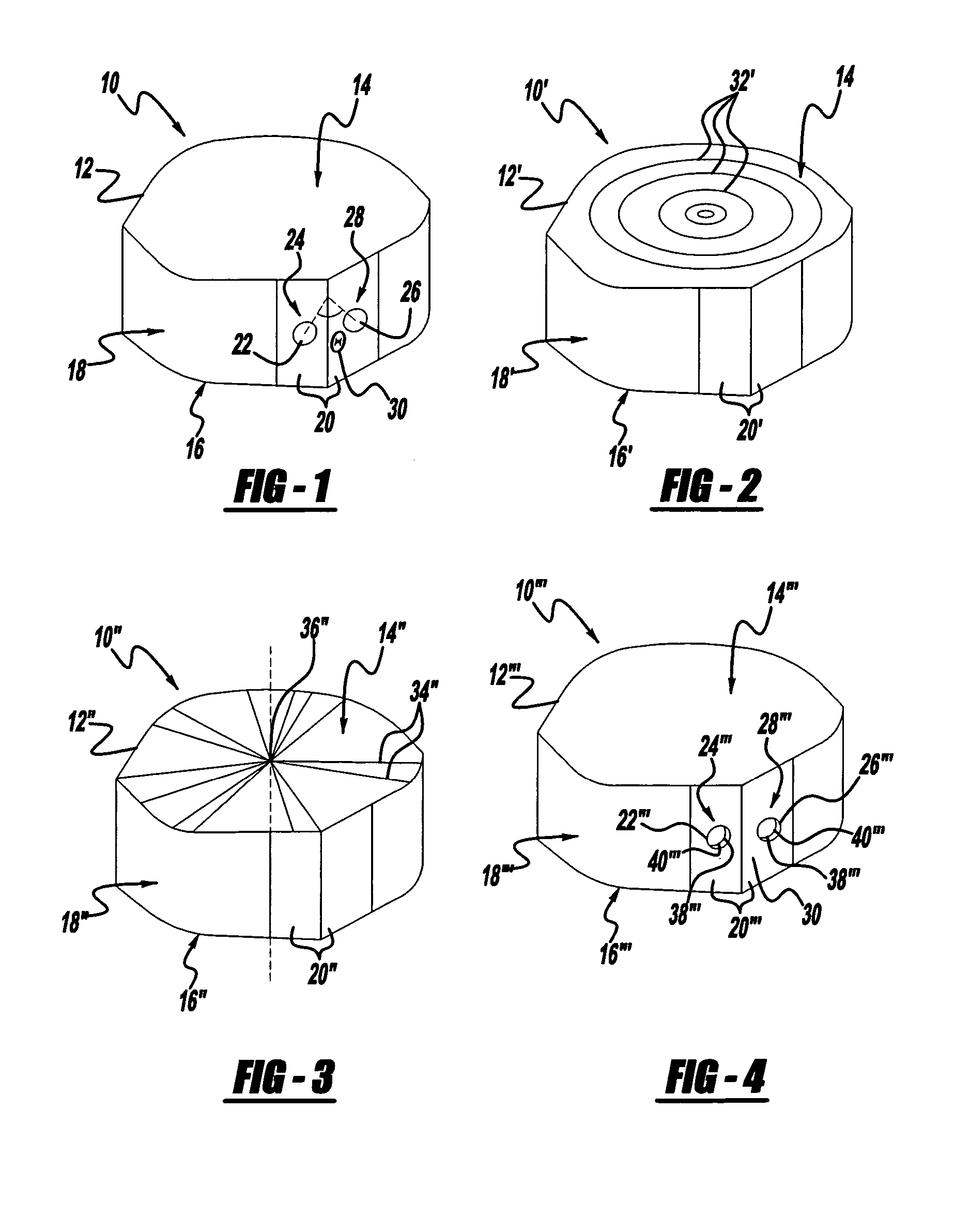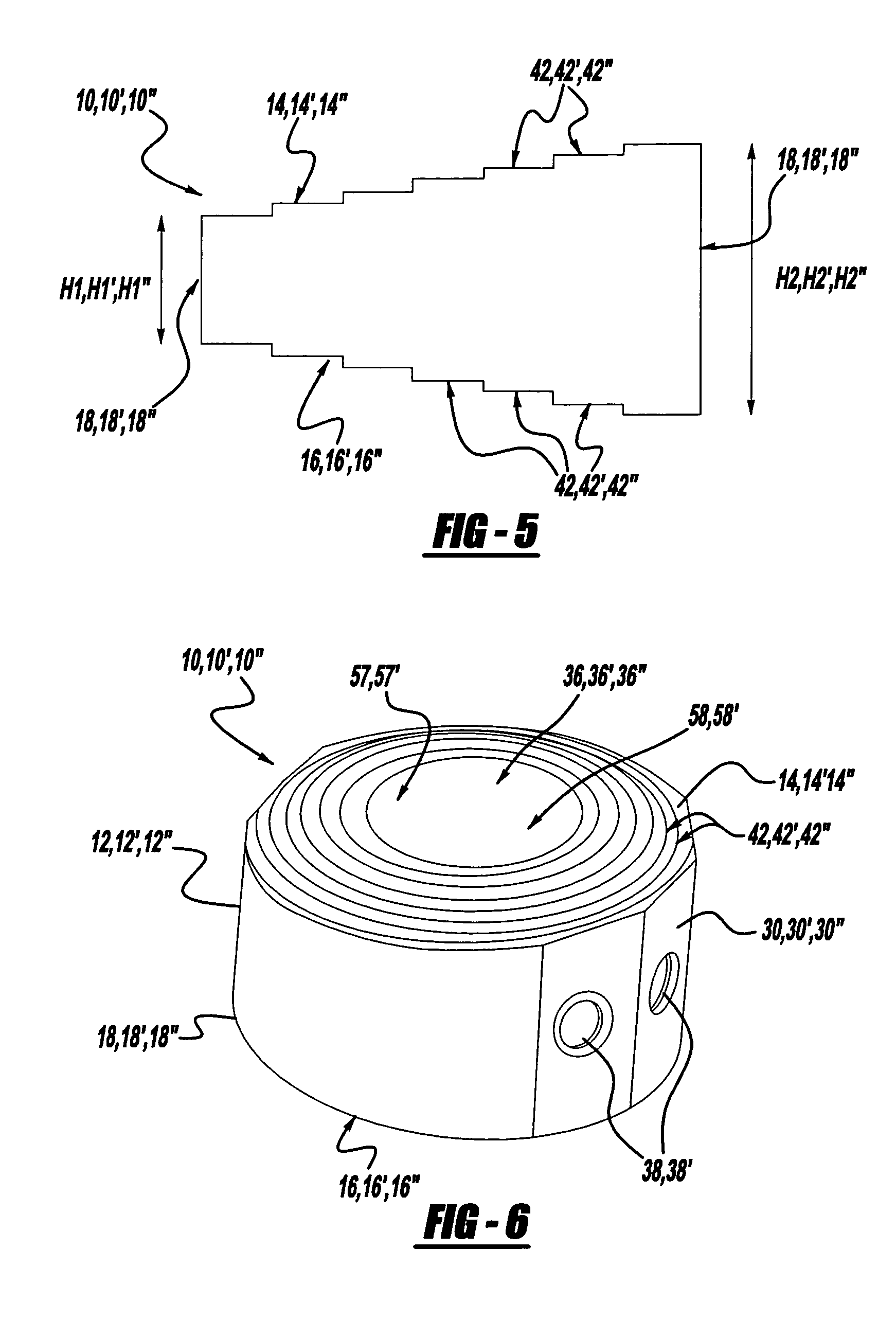Surgical instrument for implants
a surgical instrument and implant technology, applied in the field of surgical instruments, can solve the problems of spinal deformity correction that cannot be adequately performed, neck, back, or peripheral nerve pain that can be chronic and sometimes debilitating, and may encounter difficulties in regard to the growth of incorporated bony material
- Summary
- Abstract
- Description
- Claims
- Application Information
AI Technical Summary
Problems solved by technology
Method used
Image
Examples
second embodiment
[0043] an implant used for insertion by the implant insertion device 60 of the present invention is a disk-shaped bone implant shown generally at 10′ in FIG. 2. The bone implant body 12′ includes a superior end face 14′ and an inferior end face 16′. An outer sidewall 18′ extend between the superior end face 14′ and the inferior end face 16′, and includes at least two flat sidewall portions, each indicated at 20′. The superior end face 14′ and the inferior end face 16′ each include concentric cuts 32′.
third embodiment
[0044] an implant used for insertion by the implant insertion device 60 of the present invention is a disk-shaped bone implant shown generally at 10″ in FIG. 3. The bone implant body 12″ includes a superior end face 14″ and an inferior end face 16″. An outer sidewall 18″ extend between the superior end face 14″ and the inferior end face 16″, and includes at least two flat sidewall portions, each indicated at 20″. The superior end face 14″ and the inferior end face 16″ each include radial cuts 34″ extending radially from the outer sidewall 18″ to a center 36″ of the implant body 12″.
fourth embodiment
[0045] an implant used for insertion by the implant insertion device 60 of the present invention is a disk-shaped bone implant shown generally at 10′″ in FIG. 4. A bone implant body 12′″ includes a superior end face 14′″ and an inferior end face 16′″. An outer sidewall 18′″ extends between the superior end face 14′″ and the inferior end face 16′″, and includes at least two flat sidewall portions, each indicated at 20′″. A first insertion pin hole 22′″ is included on a first flat sidewall portion 24′″, and a second insertion pin hole 26′″ is included on a second flat sidewall portion 28′″. A stress reliever in the form of a counter bore cut 38′″ is inside a distal end portion 40′″ of the pin holes 22′″ and 26′″ that relieves stress applied by a pin disposed in the pin hole.
[0046] A method of forming a bone implant includes cutting concentric cuts 32, 32′, 32″ into the superior end face 14, 14′, 14″ and the inferior end face 16, 16′, 16″ of the bone implant 10, 10′, 10″. Another metho...
PUM
 Login to View More
Login to View More Abstract
Description
Claims
Application Information
 Login to View More
Login to View More - R&D
- Intellectual Property
- Life Sciences
- Materials
- Tech Scout
- Unparalleled Data Quality
- Higher Quality Content
- 60% Fewer Hallucinations
Browse by: Latest US Patents, China's latest patents, Technical Efficacy Thesaurus, Application Domain, Technology Topic, Popular Technical Reports.
© 2025 PatSnap. All rights reserved.Legal|Privacy policy|Modern Slavery Act Transparency Statement|Sitemap|About US| Contact US: help@patsnap.com



